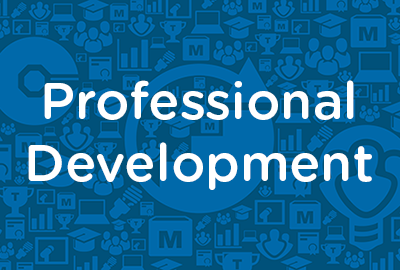 |
Safety and Survival in an Active Shooter Event |
1.00 |
An all too unfortunate reality is that active shooter events are occurring with alarming frequency throughout the world. This course is intended to make you aware of the steps you should take if you are ever involved in an active shooter event. |
 |
Correcting Performance Problems: Identifying Performance Problems |
1.50 |
An attendance problem occurs when an employee fails to report to work, doesn’t give proper notification of an absence, or exceeds the number of days allotted for absence.
You should address attendance problems carefully. Handling these problems poorly can lead to serious consequences, such as frequent employee turnover or workplace aggression. Before confronting an employee with an attendance problem, you need to identify the type of attendance problem and determine its severity.
In this course you will learn to: identify the types of attendance problems, assess their impacts, and determine a problem’s severity, identify the types of achievement problems, assess their impacts, and determine a problem’s severity, identify the types of conduct problems, assess their impacts, and determine a problem’s severity. |
 |
Correcting Performance Problems: Identifying Performance Problems (Instructor Guide) |
1.50 |
An attendance problem occurs when an employee fails to report to work, doesn’t give proper notification of an absence, or exceeds the number of days allotted for absence.
You should address attendance problems carefully. Handling these problems poorly can lead to serious consequences, such as frequent employee turnover or workplace aggression. Before confronting an employee with an attendance problem, you need to identify the type of attendance problem and determine its severity.
In this course you will learn to: identify the types of attendance problems, assess their impacts, and determine a problem’s severity, identify the types of achievement problems, assess their impacts, and determine a problem’s severity, identify the types of conduct problems, assess their impacts, and determine a problem’s severity. |
 |
Building Relationships with Children and Youth |
2.00 |
An environment that fosters positive relationships between children, youth and adults is critical to creating a high quality program. This course supports participants in exploring how to build positive, meaningful relationships with children and youth, in order to plan programs that best meet their needs. |
 |
Growing as a Professional in School-Age Programs: Opportunities for Professional Development |
1.00 |
An important part of professionalism in the school-age field is continued personal growth and development in relation to the field. This requires using appropriate resources and strategies to further individual professional development. In this course, we will explore professional development opportunities for school-age staff. |
 |
Growing as a Professional: Health and Stress Management (Collection) |
2.00 |
An important part of professionalism in the school-age field is continued personal growth and development in relation to the field. This requires using appropriate resources and strategies to further individual professional development. In this course, we will explore professional development opportunities for school-age staff. |
 |
Infectious Diseases: Causes and Symptoms |
1.00 |
An infectious disease is an illness that is caused by organisms such as bacteria, viruses, fungi, and parasites. Many of these organisms live in or on our bodies, and are normally harmless. But under certain circumstances, they can cause disease.
Course Learning Objectives:
- Describe infectious disease, and the ways in which germs that can cause infectious disease are spread.
- Identify common symptoms of infectious diseases, and why young children are vulnerable to infectious diseases. |
 |
Infectious Diseases in Early Childhood (CDA 1) |
3.00 |
An infectious disease is an illness that is caused by organisms such as bacteria, viruses, fungi, and parasites. Many of these organisms live in or on our bodies, and are normally harmless. But under certain circumstances, they can cause disease. This course is also designed to be part of a Child Development Associate (CDA) Credential™ curriculum. It covers Subject Area 1: Planning a Safe, Healthy Environment to Invite Learning. |
 |
Interviewing Skills: Fundamentals Of Interviews (Instructor Guide) |
1.00 |
An interview is a planned, focused conversation that provides an employer with information needed to evaluate a candidate’s ability and motivation to perform a job successfully. In addition, interviews enable you to analyze an individual’s potential fit with an organization. To select the right candidate, you need to have a range of interviewing skills.
In this course you will learn to: discuss the benefits of interviewing skills and identify the various types of interviews, and define the success factors for a position and identify the steps involved in writing and finalizing those success factors.
This Instructor's Edition of this course includes notes and suggestions to assist you in presenting the material, whether in an in-person classroom setting, or as an instructor-led online or distance-learning course. It also provides you with the answers to questions found in mid-lesson activities, as well as in the quiz that concludes the course. |
 |
Interviewing Skills: Fundamentals Of Interviews |
1.00 |
An interview is a planned, focused conversation that provides an employer with information needed to evaluate a candidate’s ability and motivation to perform a job successfully. In addition, interviews enable you to analyze an individual’s potential fit with an organization. To select the right candidate, you need to have a range of interviewing skills.
In this course you will learn to: discuss the benefits of interviewing skills and identify the various types of interviews, and define the success factors for a position and identify the steps involved in writing and finalizing those success factors. |











